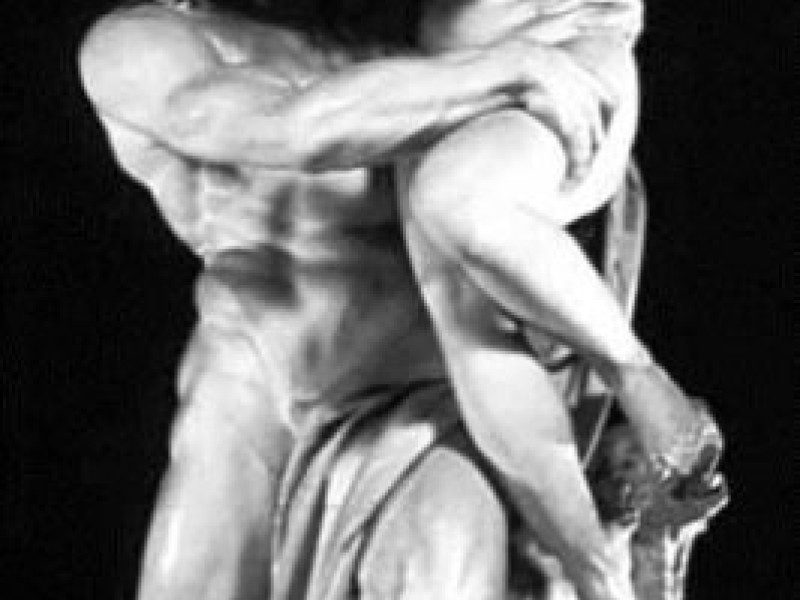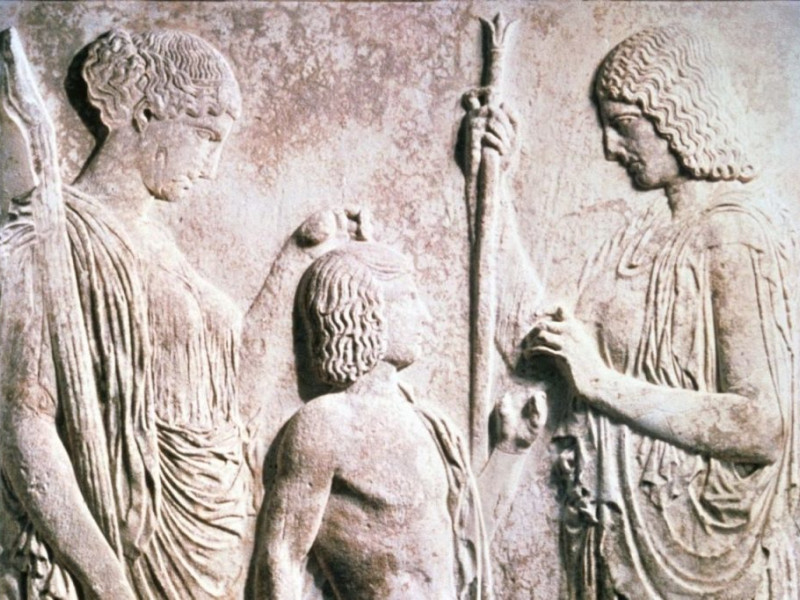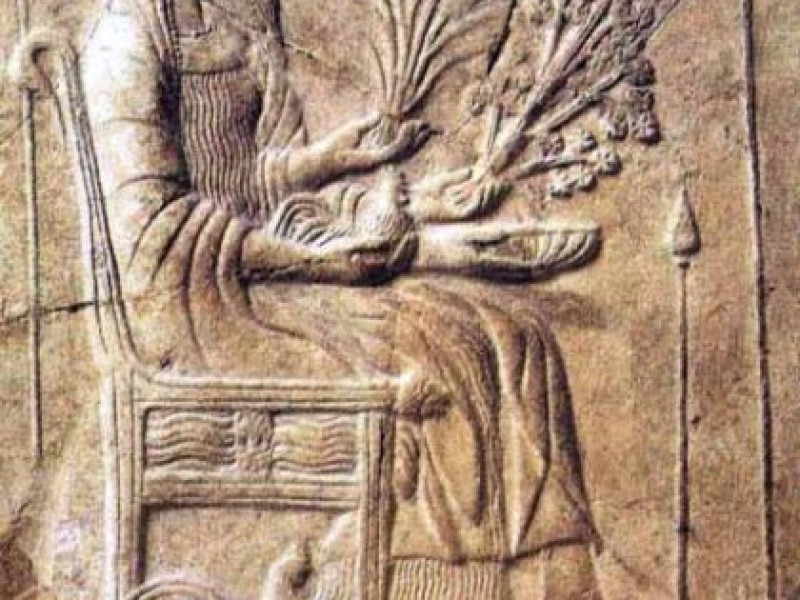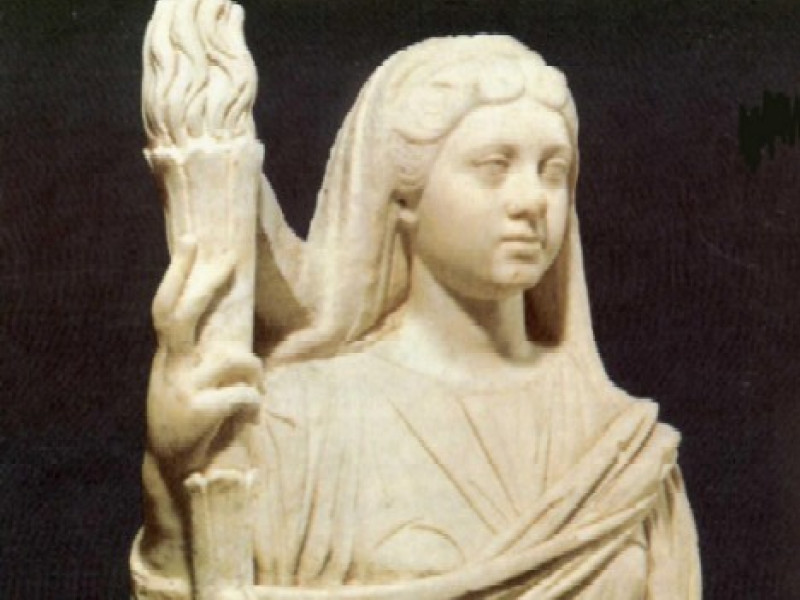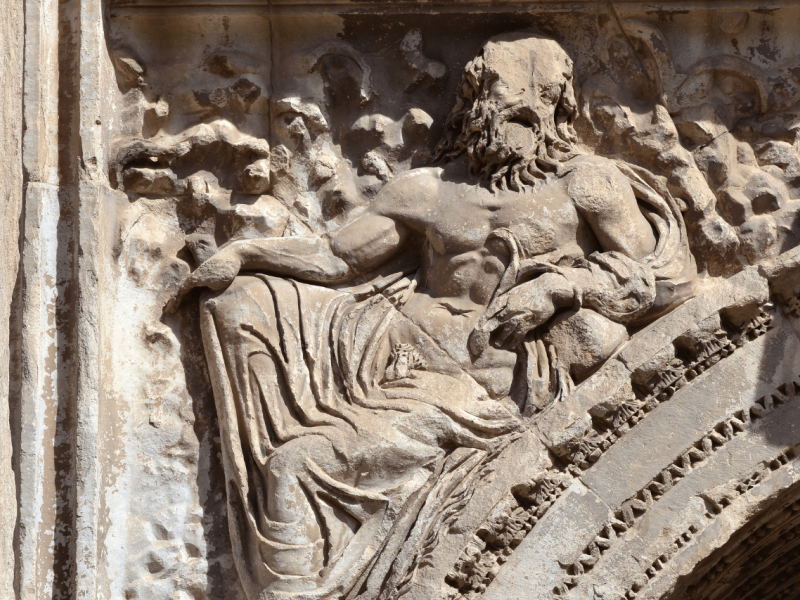Persephone (Kore)
A goddess of the underworld. Persephone was the daughter of Zeus and Demeter. She was known (or by her title) as Kore (Κόρη, "maiden"). The Romans called her Proserpina.
Before she was abducted, she was perhaps the personification of spring and goddess of corn, fruits and flowers. After her abduction, she became known as the dreaded goddess of the Underworld.
Persephone was playing in the meadow with her companions, the Oceanids (daughters of Oceanus), when Hades saw and fell in love with her.
It was said that Hades had made arrangements with his brother Zeus over the abduction and marriage of Persephone, without Demeter's prior knowledge. It was Hecate and Helius who revealed to Demeter who had abducted her daughter.
Her uncle Hades made Persephone his wife and queen. Hades tricked Persephone into eating pomegranate seeds so that she could not leave the Underworld for very long. Since she had eaten the seeds in the Underworld, she had to stay with her husband. However, Zeus or Hermes made Hades and Demeter compromise where and when Persephone should live. Persephone would live a third of the year with her new husband Hades, and the rest with her mother Demeter.
A more detailed myth of her abduction and her mother Demeter can be found in the Mother Goddesses page, under the title Demeter and Persephone.
In the Underworld, Hecate became her companion. Persephone was the half-sister of Despoina, the goddess of horses, whom she was sometimes confused with.
A slightly different version of her abduction can be found in Ovid's Metamorphoses and in Hyginus Fabulae.
Some accounts called her the daughter of Zeus and Styx, the Underworld river goddess. This suggests that she had always lived in the Underworld. In some myths, Persephone appeared to be more of the ruler of the Underworld than Hades himself, and in some cases Hades didn't appear at all.
According to Ovid and the geographer Strabo, Persephone transformed the nymph named Menthe or Minthe into a plant known as mint, when Persphone discovered that Hades was having an affair with the nymph.
In the myth about the youth Adonis, Persephone was a rival to Aphrodite for the young man's affection. Like Hades and Demeter, Persephone and Aphrodite had to compromise so that Adonis lived part of his time with her and the other with the love goddess. The other third of Adonis' time was to be freely spent on his own.
The Athenian hero Theseus tried to help his best friend Peirithoüs, king of the Lapiths, to abduct Persephone, because the rash king wanted to marry a daughter of Zeus. Hades knew of their plot, and cleverly welcomed them into his home. The moment Theseus and Peirithoüs sat on Hades' chairs, they forgot everything, including their plot to abduct Hades' wife. Heracles managed to save Theseus, but had to leave Peirithoüs behind.
In the Roman poem, Venus (Aphrodite) sent her daughter-in-law Psyche to fetch a make-up box from Proserpina (Persephone). Only an immortal could use the contents in the cosmetic box, so the moment Psyche opened the box, she fell into a deathly slumber. Cupid (Eros) went into the Underworld to rescue his wife from her unnatural slumber.
The Homeric Hymn to Demeter said that Persephone was the lady of the golden sword and glorious fruits. Artists sometimes depicted her carrying a sword in one hand and a basket of fruits in another.
Her favourite trees were poplars and willows.
According to one source, Persephone bore Plutus the god of wealth to Hades. And Plutus was one of the Eleusinian gods. However, Hades and Persephone were usually considered to be a childless couple. Plutus was usually said to be Persephone's half-brother and the son of Demeter and Iasion.
Usually Persephone was referred to as the daughter of Zeus and Demeter, but in a few accounts, her mother was Rhea. There is either some confusion with Demeter and Rhea, or Rhea and Demeter were the same goddess, but Demeter represented a different aspect of Rhea.
According to the Orphic myth, Rhea, daughter of Uranus and Rhea, was the wife and consort of Cronus. When Zeus was born, her name changed to Demeter. When Zeus became the new supreme ruler of the world, he raped his mother Rhea/Demeter, and she gave birth to Persephone.
According to the Orphic poems written by the Neoplatonic philosophers (3rd-4th century AD), Zeus slept with his own daughter while he was in the form of a snake, so Persephone became the mother of Dionysus or Zagreus. Through the machination of his jealous consort Hera, the Titans killed and devoured Zagreus (Dionysus). Zeus destroyed the Titans with his thunderbolts. Mankind was created from the ashes of the Titans. Zagreus' heart was saved, which Zeus swallowed. Zagreus was reborn when Zeus seduced a mortal woman, Semele, and Zagreus became known as Dionysus. Most of the time, writers simply called Zagreus, Dionysus.
According to the Orphic myth, it was Persephone who was the final judge to decide if a person would gain entry to Elysium. Those who failed to please her would either be punished in Tartarus or the shade would be reincarnated, to live another life among the living. Only those who lived a virtuous life could gain entry to Elysium.
Related Information
Name
Persephone, Περσεφόνη, Persephoneia (Greek).
Proserpina, Proserpine (Roman).
Kore, Korē, Core, Κόρη – "maiden"; Cora, Κόρα (Greek).
Libera (Roman).
Sources
Homeric Hymns.
Library was written by Apollodorus.
Metamorphoses was written by Ovid.
Fabulae and Poetica Astronomica were written by Hyginus.
Theogony was written by Hesiod.
The Iliad and the Odyssey were written by Homer.
Argonautica was written by Apollonius.
Related Articles
See also Proserpina.
Demeter (Ceres), Hades, Styx, Rhea, Plutus, Zeus.
See also Demeter and Persephone in the Mother Goddesses.
By Jimmy Joe



